15 March 2013
In response to great demand, we have decided to publish on our site the long and extraordinary interviews that appeared in the print magazine from 2009 to 2011. Forty gripping conversations with the protagonists of contemporary art, design and architecture. Once a week, an appointment not to be missed. A real treat. Today it’s Konstantin Grcic’s turn.
Klat #02, spring 2010.
Konstantin Grcic is literally one of the most familiar faces of contemporary design: his countenance – a handsome one – often appears in magazines and websites. That sly gaze, always behind the same eyeglasses, has been smiling at us for years against the backdrop of a perfectly unkempt beard, accompanied by charming, natural gestures, usually done in a jacket, lately in shiny black. A conversation, even for a few minutes, proves that Konstantin Grcic is the best part of what you can discover behind the precise charisma of this image: open, cordial, affable, he speaks softly and slowly to make sure he’s understood (because it is important to be understood). He seems very confident but very shy at the same time. We talked for hours in his studio in Munich: long conversations, conveying the impression of someone who is perfectly aware of his worth, of his role on the contemporary design scene, his well-deserved success, but has no intention of passing out great theories on how the world works. He knows tons of stuff, but only lets on when it’s pertinent. He thinks a lot, but he likes to do it above all through his projects, his objects: they are the triggers of his thought process. It’s a pleasure to listen to him, absorbed in the narration of dense, complex ideas, reflections developed over years of work, which he immediately wants to reapply to things, the things of the real world, which are his main concern.
You have said, on more than one occasion, that you like to design by starting with the conditions set by the client. Could you explain what you mean, and when you realized this?
Right away, at the start, when my clients were still just my friends, and there were only a few jobs, for small things. I always like the idea of working by starting with the needs and limitations imposed by someone who assigned me a task. Almost a condicio sine qua non. I clearly recall feeling liberated at the end of college: making design became real, there was a real reason for thinking about a project. The time in school was one of ideas for which you had to imagine their surroundings, inventing a context: good exercise, of course, but not really my thing. I truly believe that design, at least my design, needs a real context made of discussions with companies, the precise requests of clients. Had I stayed much longer in an abstract dimension like that of college, I wouldn’t have imagined and produced very much. I’m not one of those people that wakes up with the image of a chair in his mind, precisely that chair, to be made at all costs. My thought process gets going as a result of a request, the desire or the possibility of really doing a project. This is why the relationship with the client is fundamental.
So tell me more about your relationships with companies. You have worked, and still work, with some of the most important brands in your sector: Muji, Authentics, ClassiCon, Moroso, Magis, Krups, Plank, Serafino Zani, Flos and others still. Some of those relationships have continued for years, while others have been interrupted.
The relationship with a company plays a key role in design development, always, for everyone. I even see it as one of the most stimulating aspects of my work: much more than mere business. When it works, it is a truly fertile dialogue, it means pursuing a shared goal, a passion. That doesn’t mean always being in agreement. The most productive and interesting relationships are the ones that allow for friction. One good example is a company like Magis, in this sense. Eugenio Perazza, who runs the company, has a very strong personality: he’s stubborn, hard to deal with, but in the end it’s worth the effort. Conflicts and disagreements force both parties to be more precise and clear, in intense discussion, to try to convince each other. The relationship between a company and a designer is successful when you manage to overcome conflicts and make them productive: the better you know each other, the more results you can achieve, and the relationship can continue through the years, through the changes. Design history is full of good examples: Magistretti for Cassina, Citterio for Vitra, Eames for Miller, Sottsass for Olivetti. When I begin working with a company this is always the objective, to build a lasting relationship: often I succeed, at times incompatibilities arise later, while in other cases it is clear from the start that the relationship just won’t work. With ClassiCon, for example, things went well for 10 years, then we changed and we no longer understood each other. Krups, on the other hand, was one of the few cases where I immediately had a negative impression, which was confirmed by a relationship that degenerated almost immediately. I’m glad I interrupted that relationship: I never sensed a willingness on their part to discuss and to interact, everything was cold and distant.
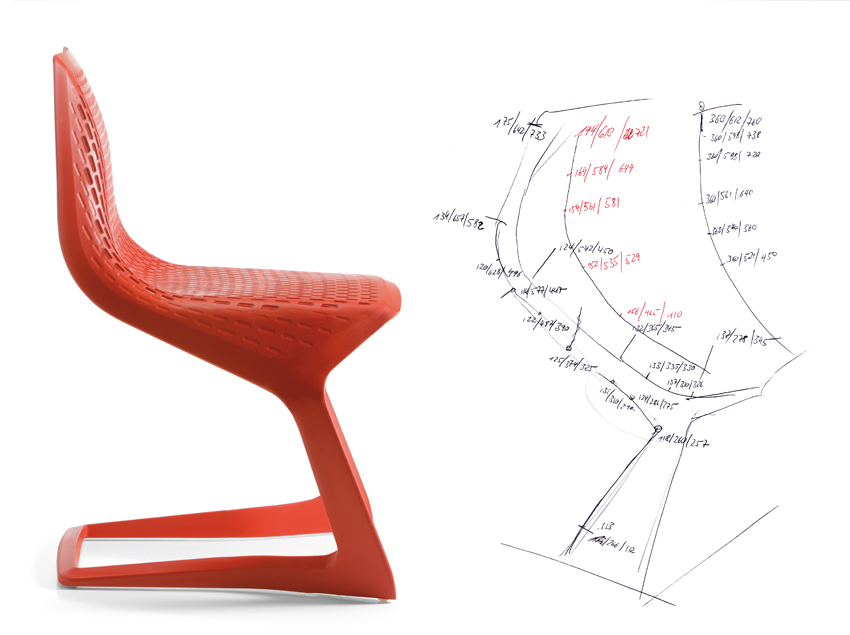
Konstantin Grcic, MYTO, 2007-2008. Design for Plank Collezioni.
What about Muji?
Muji is a particular, interesting case. To start with, there is an undeniable difference between our culture and that of Japan: there is mutual respect and we find ways to understand each other, but it is never the same as the cases in which you have a common cultural background. Muji is very different from the other companies with which I work: it advertises itself as a non-brand, but it is clearly a very strong brand and the individual who expresses himself creatively inside that brand does not have a particularly visible identity. A Muji product must first and foremost be clearly Muji. On the other hand, Magis has an idea of what a Magis product should be like, but it leaves room for many more interpretations. For me, working with Muji is not so much about designing things as about offering opinions: I function as a dispenser of recommendations. I don’t use the word consultant because it is too closely tied to the idea of the corporation, which is not close to Muji’s way of working. I share this role, which I think of as a privilege, with a small group of designers, including Jasper Morrison and Naoto Fukasawa. It is as if we were constructing a discussion, a debate on the work of a big company. I’ve worked with Muji for 7 years now. Very few objects have come out of it, but lots of ideas, in a situation of intense, productive discussion. I also like it because I think it is important for me and for my studio to be involved in different activities. I like to explore new things, things I’ve never done and maybe don’t know how to do.
So companies play a fundamental role in your work. Is there some other factor that has a significant influence on your way of designing? Other designers, users, collectors, the figurative arts?
End users, the people who buy and use my objects. Their influence, obviously, happens on very different levels with respect to the impact of companies. I cannot discuss things with them, but I always try to imagine them, I construct little stories, almost films, I try to draw them, to imagine their lives and their names, to associate them with someone I know. I find many aspects of this process interesting. I don’t want to play the psychologist, but the relationships human beings have with things are truly fascinating, and objects represent a formidable social observatory on humankind. While a design object probably cannot change our way of acting, it can certainly shed new light on it. Let’s take 360° (Magis, 2009, ed). While I was designing this rather unusual office chair I also thought about how it would permit users to reflect on their habits: how do we usually sit? Why do we choose one position instead of another? What does comfort mean? Maybe it’s different for every one of us. Another example is Chaos (ClassiCon, 2001, ed), another atypical seat I designed a few years ago: in that case I asked some passers-by to come into my studio and try it out, to see if they would get comfortable on such an unfamiliar object. Pieces like this come from questions I ask myself about reality and about our habits. This is my design approach. It might seem a bit rhetorical, but I believe design has a profound relationship with life, our manias, our tics, the playful and tragic aspects of the everyday world, the difficulties of day-to-day existence. I really like coming to terms with all that.
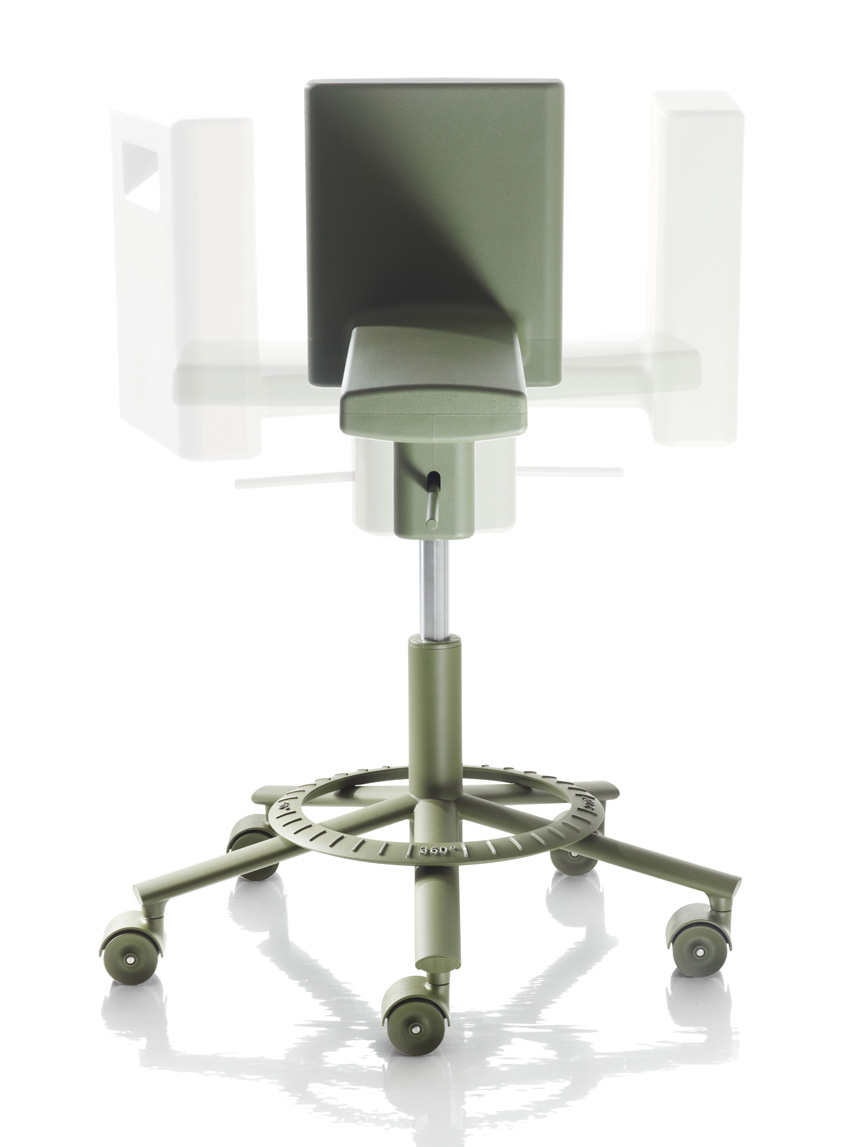
Konstantin Grcic, 360°, 2009. Design for Magis.
Democratic design, for everyone, or avant-garde design? What is your position, and how has it evolved over the years? Where do you position your work on this scale?
The idea of democracy is one of the foundations of Industrial Design. But our ways of interpreting central role of this idea have certainly changed: the hypothesis of a design product that is truly for everyone is a bit naïve today, a bit impoverished: it’s an attitude that makes things worse instead of improving them. To fulfill the notion of “one size fits all” you run the risk of lowering the level, of falling into a boring mainstream. As a student my dream was to work for companies like Ikea, to design objects for everyone, but then I understood it would be hard to operate in that way: I don’t believe you can, or should, imagine a chair for everyone, I think working in the name of this idea – which I consider a grand illusion, in the end – is a sort of compromise. Instead, I try to focus on the quality of a product that is truly conceived for someone, even if that someone belongs to a limited group: I would get lost in pursuit of something aimed at everyone, and maybe I would end up reaching no-one. An object conceived for a clearly identified user, over time, if it really functions, will be able to reach an increasingly large audience. Let’s take an example: the Thonet chair. Today it is considered a classic, but when it was designed it was almost the expression of the thinking of a madman: it was pure avant-garde, it seemed bizarre to people at the time. Another more up-to-date example is the iPod. When it came out it was very expensive, a niche object for an elite, but now we can say it is for everyone. It is true that Apple has developed more economical, affordable versions, but their success comes from the fact that it was not conceived for everyone. They concentrated on a design of great quality, a refined aesthetics that was not necessarily universal. The other day someone sent me a new iPod, a model with a little built-in camera, and asked me to record a short video as a contribution to a project. I’ll send the video and keep the iPod: so an elite product has become a gadget you find in your mailbox… Getting back to me, I have understood that I give my best when I work for small companies on projects destined to reach a limited group, experimenting: if they are really valid, the projects will end up having a more widespread influence, and reach other segments of the market.
You became famous in the early 1990s as an exponent of the so-called “new simplicity”. What do you think about this label… was it appropriate? Has your design changed much since then?
I’ll start by saying that I really like the word complexity. My first projects were simple not only because I had a sincere enthusiasm for simplicity and its beauty, but also for practical reasons: I was just starting out, my studio was very small, I was working for young companies, I had few tools. Simplicity was also the result of the means available to me at the time. I believe the work of Jasper Morrison – which had a great influence on mine – also owes its character of simplicity, at least in part, to concrete limitations. Having said this, I have great memories of that period, and what I was doing came naturally. Then, after a few years, simplicity became commonplace: it’s not easy to make simple objects, but perhaps it was easy to copy the formula, to reproduce them. At a certain point the Salone del Mobile had become very boring, infested by flat, ordinary simplicity. Simplicity lost its charm, and at first I felt as if I had been deprived of my way of doing design. But then what do you do? Do you try to chase after something that’s been stolen? For me, that was an opportunity to do something else: I began to feel a strong attraction to complexity. Today my projects can be called complex with respect to their process of realization: the technologies needed to produce them, the experimentation behind them. But the results are still simple, essential: Chair_ONE (Magis, 2004, ed), for example, continues to be a simple object, in my view, though I know many people would not agree. In any case, even the complexity of the process behind it is relative. We should not forget that we are talking about design objects, not works of architecture! I’d have no idea how to design an airport…
I know you don’t like to talk about a style of your design, or about style in general, but is there a fil rouge that connects your works?
Other than simplicity (laughs, ed)? Seriously, I think my projects, my objects, share the fact that they are constructed, not sculpted. Let me explain: they are structures that grow, starting from nothing. If I have to visualize my way of doing design, I don’t think of a block (of wood, plastic, stone) from which to remove material to reach a form. I think of a structure that grows, from scratch. There is no pre-existing block from which to extract something, but there are many pieces: I take one, then another, then another, and I build something, a structure. I think this is the fil rouge that connects all my projects.
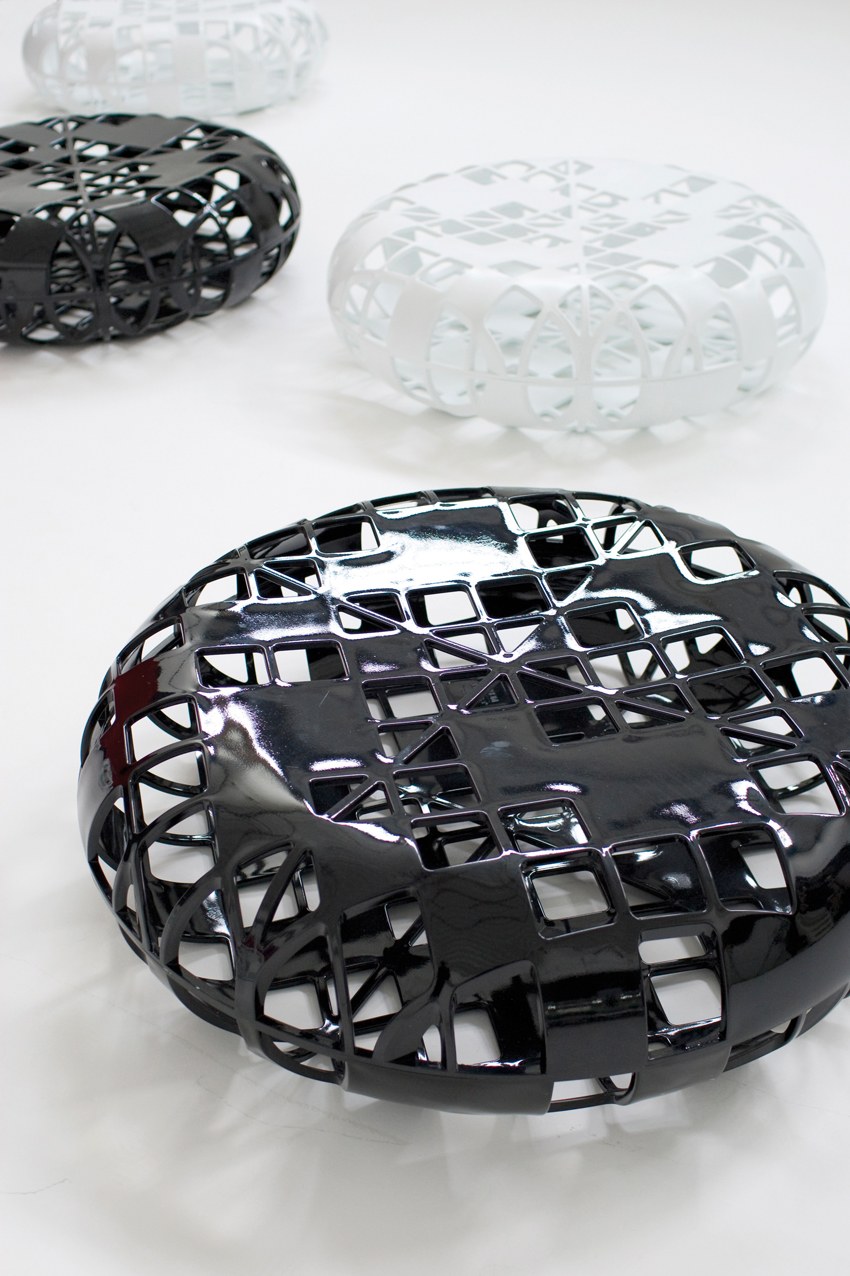
Konstantin Grcic, Osorom, 2005. Design for Moroso.
A Konstantin Grcic is, in any case, a Konstantin Grcic, and as such it is subject to the phenomenon of copying. What do you think about this widespread problem in the world of design? I know you did a lecture on this topic at the latest Experimenta Design in Lisbon.
The first thing I think is that they are stealing time from me, from us: all the time we put into developing a project. Of course those who make copies are also stealing money and ideas, but the thing that irritates me most is that they are mocking the time I have invested in the development of a design: they take it, quickly, they copy it, it only takes a minute, there is no risk, no creativity. It has always happened, and I don’t know if there is any way to stop it. Certainly no law, no system of legal protection can really put a stop to it. I believe the only way to combat the phenomenon of copying is to make the original truly recognizable. Because there are those who copy, but there are also those who buy the copy: do they know it’s a copy when they’re about to buy it? I doubt it. We have to try to spread more awareness of the originals. Once again, the iPod is a good example. There are copies, but I don’t think there are many and that they work, and this is because everyone knows about the original and wants it: that’s the only real form of protection. Alberto Perazza of Magis told me there are over 100 copies of the Bombo Chair by Stefano Giovannoni. Who knows the original? Not even the guy making the copy: the person who made the 73rd copy was probably imitating the 69th, and never saw the original…
Do you think designers should be involved in the marketing strategies for their products, or not?
I’m interested in these aspects, I pay attention to them, but in the end I don’t think that they are great strategies. All this talk of marketing seems like mystification, to some extent. I think the question, in the end, is one of good common sense. I’m also interested in the practical and commercial aspects, the essential aspects of a project. For whom are we making it? How can they use it, and how will they use it? How much will they want to pay for it? I think about all these things, too, but not in a strategic way: they are an integral part of doing design. I talk a lot about these things with companies, I am curious about the final price of my objects, not to exert pressures but to have more information, to work in a more logical way during the design phase.
On the subject of roles, there is also that of Konstantin Grcic the curator. You have curated many exhibitions, from the first one for Authentics in Milan, to the recent Design Real at the Serpentine Gallery in London.
Exhibitions can trigger debate, starting a discussion on design, perhaps reviving critical positions no-one seemed to want to take. In the case of the Serpentine, I thought it would be interesting to show design in such a famous art gallery, but on the condition that it would be “real design”, namely objects that are not too close to art, as frequently happens in design today, not gallery pieces, not prototypes, but industrial design products, available on the market. The other strict rule I set, to further limit the field, was that there should be nothing “historical”. After that, my selection was very open: a group of different objects to try to communicate what design means today (a very different concept from that of Super Normal, for example). Some technological objects, some expensive, others cheap, some from highly specialized sectors, some by big names, others almost anonymous. Objects that almost have to appear in one way, others that can be interpreted in a variety of ways. With this range of different things, I try to stimulate opinions, hopefully contrasting ones. Precisely for this reason, in spite of the risk of not being understood and getting criticized, I wanted to choose all the objects myself, without relying on other opinions, displaying a selection subject to debate, made by one person only. I did not choose objects, but stories: I was interested in the thousands of possible stories behind each project. This interest was developed in the second level of the exhibition: a collective project, entirely online. At the gallery the objects were displayed in a very simple, essential way, without explanations, but at the website www.design-real.com you could find lots of information on every piece: dense, curious, unpredictable data, to enjoy outside the exhibition space, in a completely independent way. At the website the words, stories and images truly connect the objects I selected to the reality in which we live.
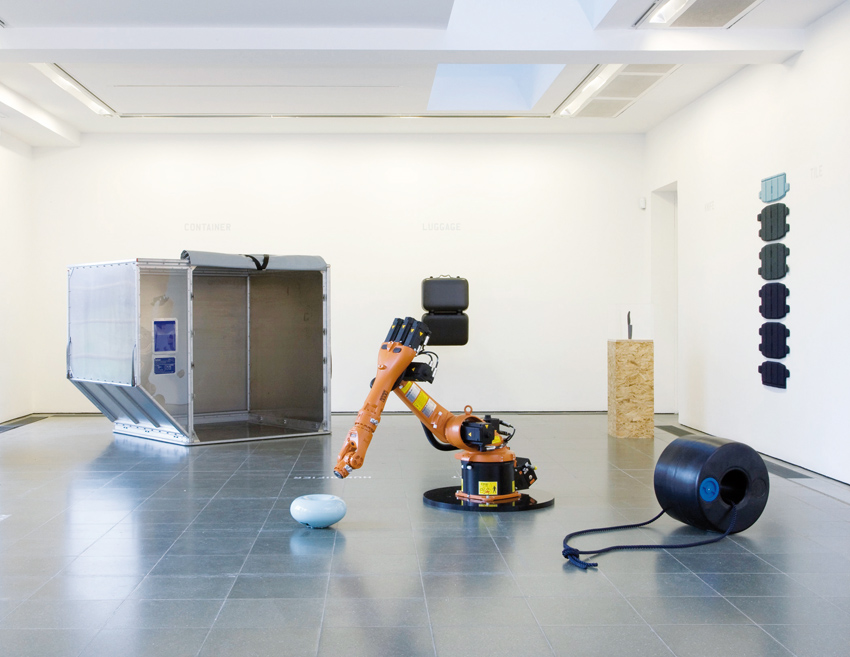
Design Real, curated by Konstantin Grcic, 2009-2010. Serpentine Gallery, London. Photo: Raphael Hefti.
Though there is a need to revive true design criticism, which is lacking today, nevertheless we can still see plenty of labels that attempt to define the work of different designers. Have any of them been applied to your work that you find particularly irritating?
The problem with labels is that all too often they are superficial. The classic example: your work is minimal. It might not even be wrong, but exactly what is it supposed to mean? It would be possible to be more precise. I’ve never managed to get a really satisfying answer. Then there are people who always talk about the humor in my work. I think they mean it as a compliment, but my intention is not to make funny things. A sense of humor is undoubtedly a good quality, and maybe I have a bit, but heaven knows I certainly do not set out to make a humorous table, or a chair to get laughs… The way you sit on the chair might be funny, the way people relate to things might be tragic or comical, and these things really do interest me. But don’t try to tell me that a design piece has a sense of humor or is comical on its own, and for all observers, without distinction. I just can’t understand that.
The names of your objects are often very apt (take Mayday, for example). Do you think about them a lot?
It doesn’t really take a lot of thinking, it’s more a matter of intuition, the feeling you have for an object, or the feeling the object unleashes in you. Forgive me for the pathetic comparison, but it’s a bit like parents with kids… Yes, Mayday (Flos, 1999, ed) might be the best name I’ve come up with, a real stroke of luck, but I can’t tell you why, it just came to me naturally. For Chair_ONE, the first chair I did for Magis, I couldn’t think of a name. On the file I saw Chair 1, so I just used it, that’s all… but in the end it has a certain ring to it, right?
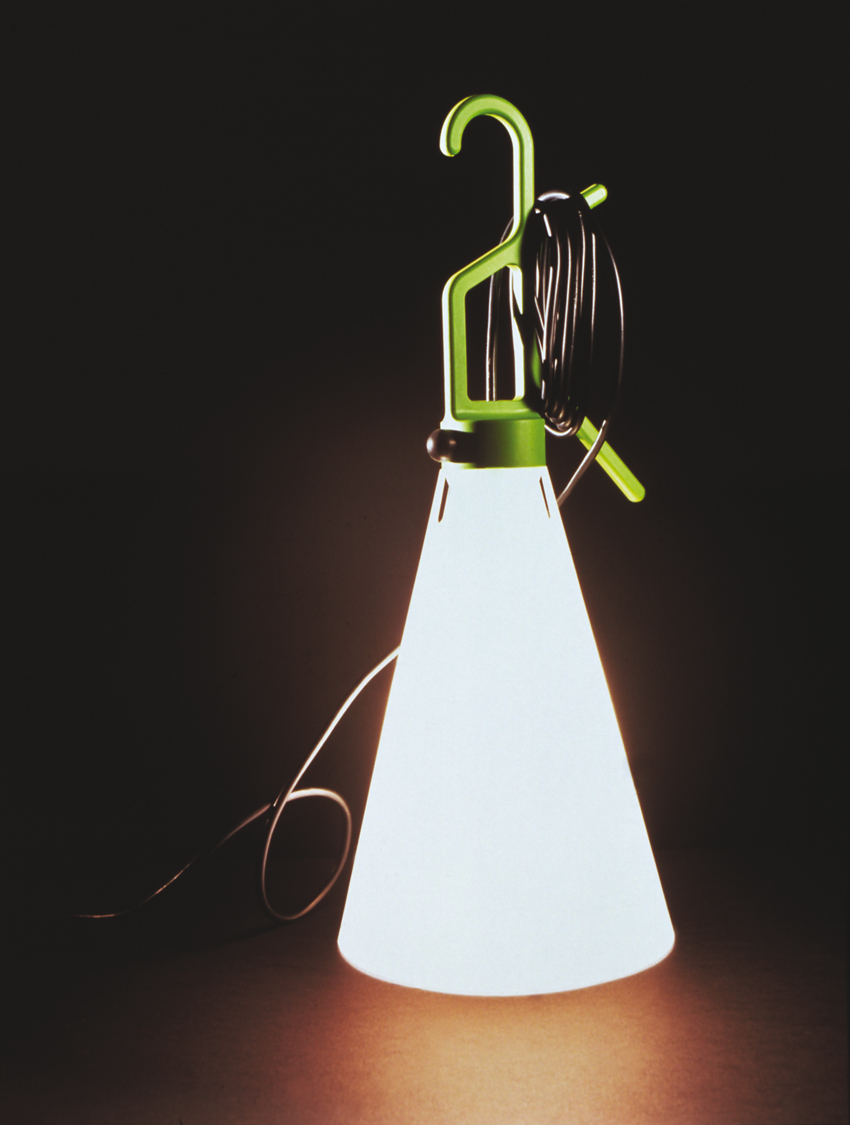
Konstantin Grcic, Mayday, 1999. Design for Flos.
Do you ever talk with objects? Do you acknowledge their human aspects?
Yes, I do, they are like pets, as Branzi says: we live with them and they also take on human aspects in the relationship we establish with them. We like them or we can’t stand them, we care for them, they are part of our life: an object of true quality stops being just matter and form, it takes on many other meanings, almost its own personality… I love to surround myself with objects, I don’t care that much about their function, I can sit on this chair or on a block of wood, I just try to have objects around me that give me good sensations. It’s no coincidence that I’m not interested in interior design, nor would I be capable of organizing the spaces in which I live with the approach of an interior designer. I like all the things you see here in my studio for different reasons, they create an atmosphere, they tell a story, but they are not conceived as parts of a pre-set, studied discourse.
Certain designers have passed through your studio and then had great success on their own, like Stefan Diez and Clemens Weisshaar. Did you encourage them to find their own path? Were you unhappy about them leaving?
Designers like Stefan and Clemens had to go their own way. Of course I was unhappy to lose them, we learned a lot from each other, but it was clear that they had to open something of their own: they both have pretty strong egos, so it was no coincidence that they often clashed. I think the people I work with now are a bit different, they are designers who enjoy teamwork, in a studio, they identify with what we are doing here and I don’t think most of them have an imminent desire to start working on their own. Of course there are still exceptions. There is a girl, Pauline Deltour, whom I have urged to go her own way, something that perhaps never happened before. She will design something for Alessi and another thing for Muji. I set up the contact and I am happy, though it means losing her from our staff.
What do you think you are capable of teaching?
I have thought a lot about the idea of teaching. I can’t be a professor in an institution, I don’t want to and I’m not capable of doing it. I identify more with the figure of the master craftsman in a workshop. After all, I began by “studying” to become a cabinet-maker, and I believe the year I spent with Jasper Morrison was much more useful than college, for me. I learned a great deal in situations in which I worked in close contact with my teacher. I don’t know if I can teach something, but maybe I can transmit an attitude: my approach to design, the way I interweave it with life, my way of treating things. It might seem abstract to you, but in Jonathan Olivares, in Clemens and Stefan, though they are very different (and they don’t even get along with each other), I can see a common matrix. I wouldn’t say they learned from me, it is more like something we developed, working together.
Do you think you can tell, at first glance, if a designer will be successful?
Yes. I think, over time, that I have sharpened a certain sensitivity, I think I can read between the lines, even when a résumé reaches the studio. At times I have made mistakes in my choices, but luckily that has happened rarely, because it’s a real disaster trying to work with people I don’t admire. Usually the people whose way of working I appreciate also have personalities I get along with.
Is there one essential quality every designer should have?
I don’t believe you can talk about a quality, exactly, I think the center of design is the thought process, the true motivation, the passion, not what’s behind a pretty form, a beautiful drawing. When I get résumés from designers who want to work here with us, I look for this motivation, I try to understand if there is a strong personality, truly original ideas, a very personal, free way of thinking. Though cut-and-paste is all over the place, I believe originality is truly a fundamental attitude for a good designer. Originality as a veritable way of being, a sort of maturity some have even when they are very young. For example, when Jonathan Olivares was just 22 he was already like that. Though I was older and had more experience, I was very lucky to be able to work with him.
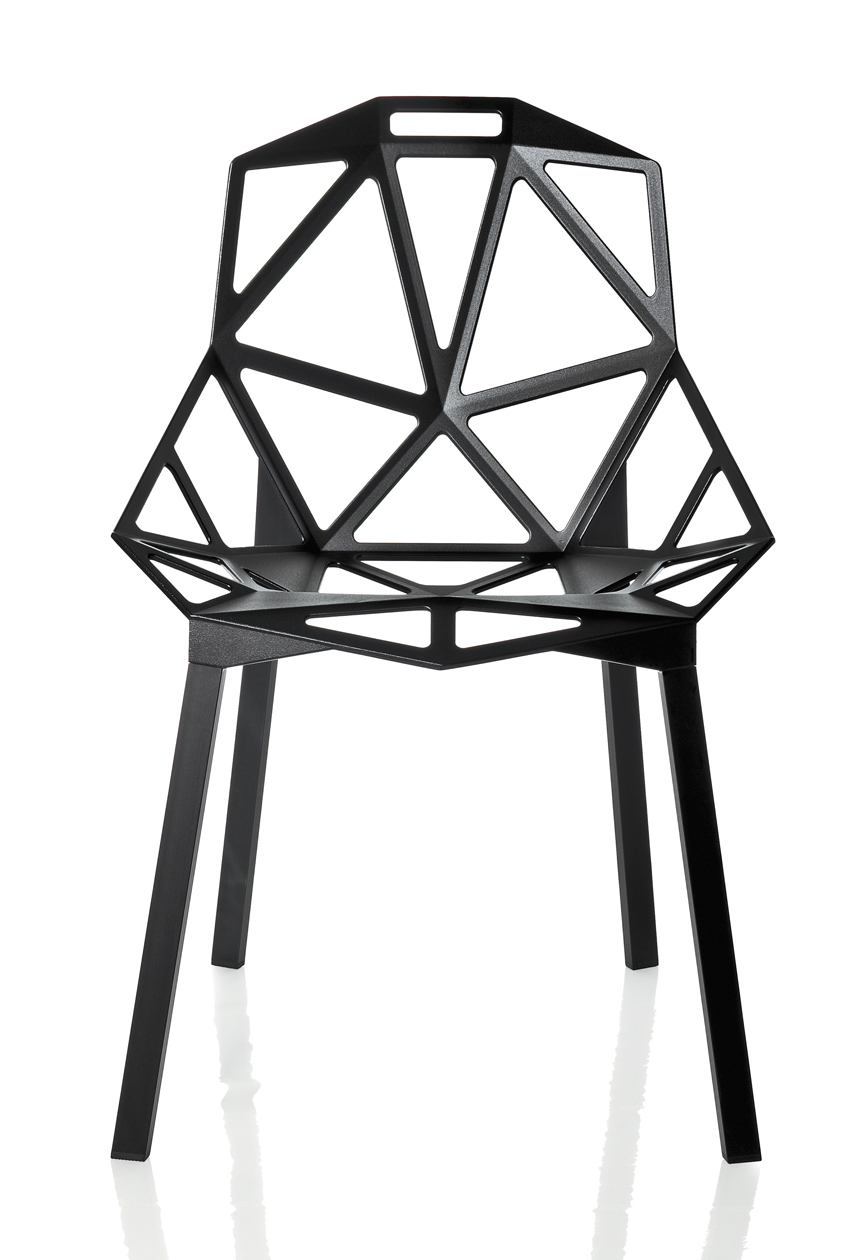
Konstantin Grcic, Chair_ONE, 2004. Design for Magis.
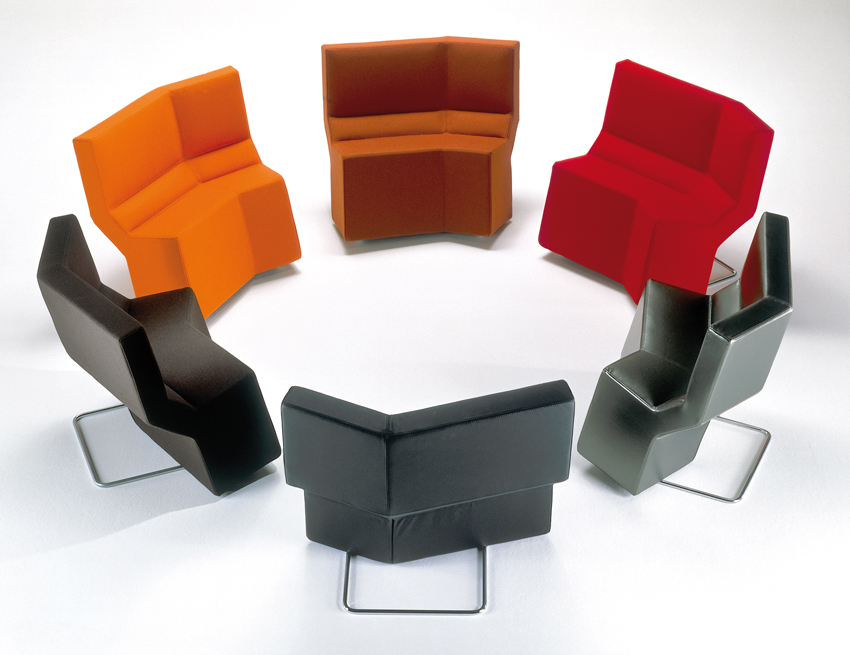
Konstantin Grcic, Chaos, 2001. Design for ClassiCon.
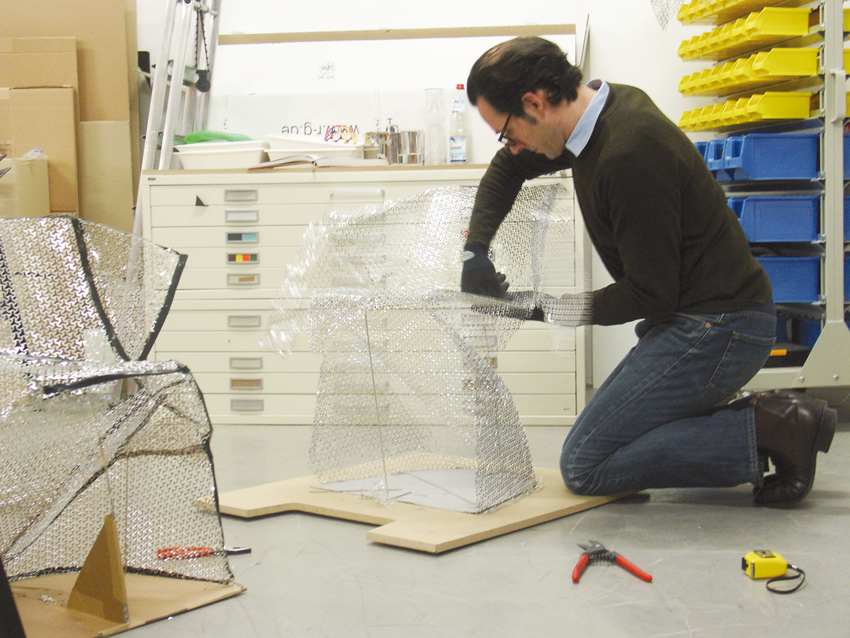
Konstantin Grcic, 2006.
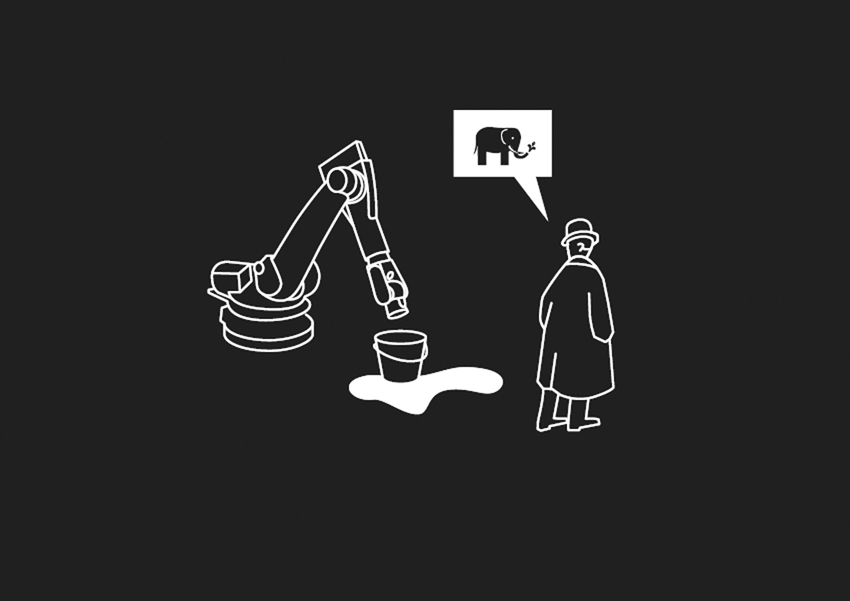
Konstantin Grcic, drawing, 2009. For Design Real, Serpentine Gallery, London.
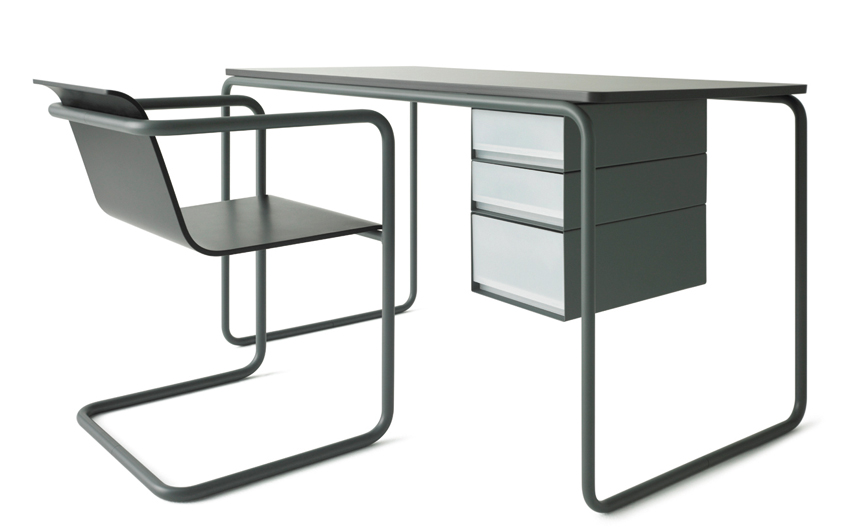
Konstantin Grcic, Pipe, 2009. Design for Muji.